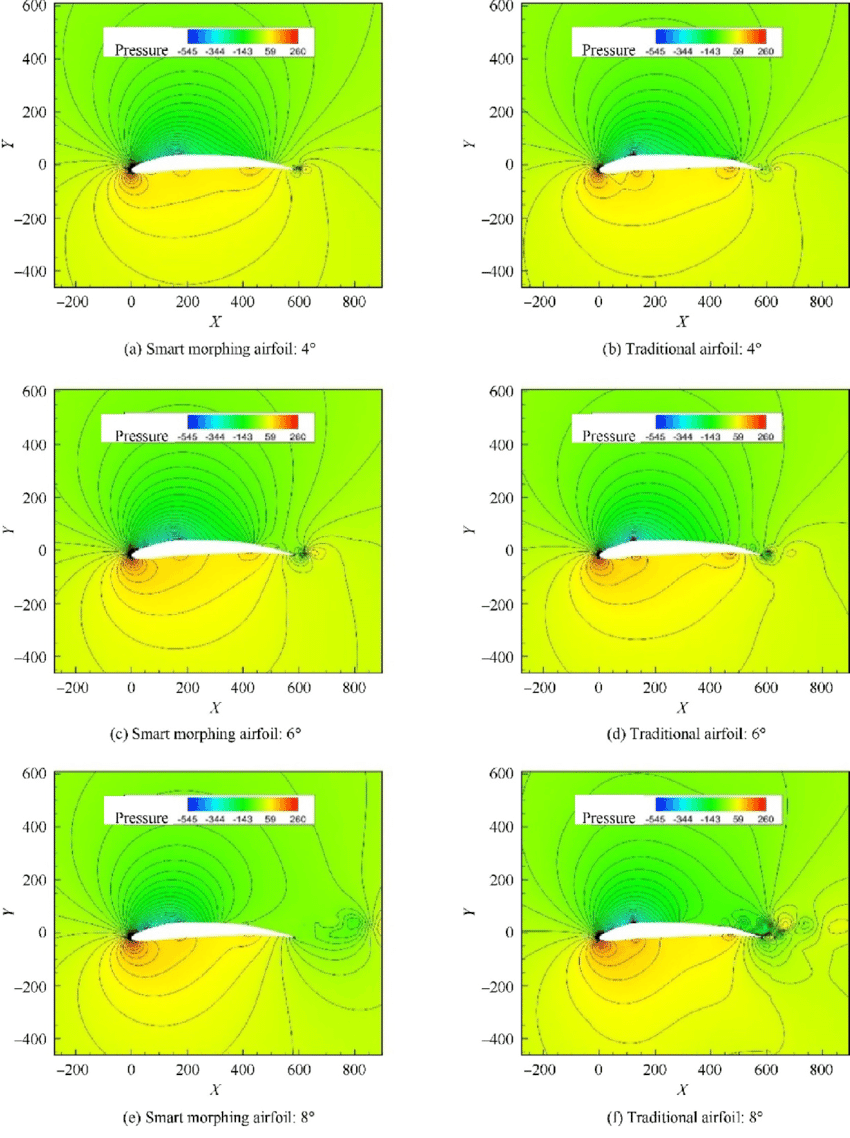Airfoil Characteristics: In the realm of aerodynamics, few concepts are as fundamental as that of the airfoil. Essentially, an airfoil is a structure or shape designed to obtain a desirable reaction from the air through which it moves. Commonly recognized as the cross-sectional shape of a wing, airfoil characteristics are integral to the design and function of aircraft, wind turbines, and numerous other applications. In this article, we will delve deep into the aerodynamic principles of airfoils, discussing their various characteristics and their implications in flight.
Airfoil Characteristics
1. Basic Structure of an Airfoil
Before discussing the aerodynamic principles, it’s vital to understand the structural components of an airfoil:
- Chord Line: A straight line connecting the leading and trailing edges of the airfoil.
- Camber Line: The line is equidistant from the top and bottom surfaces of the airfoil.
- Leading Edge: The foremost point of the airfoil.
- Trailing Edge: The rearmost point of the airfoil.
- Thickness: The distance between the upper and lower surfaces, which can vary along the length of the airfoil.

2. Aerodynamic Forces on an Airfoil
Two primary forces act on an airfoil when it moves through the air:
- Lift: A force perpendicular to the oncoming flow direction. Lift is generated due to the difference in pressure above and below the airfoil.
- Drag: A force parallel to the oncoming flow direction. It opposes the motion and is caused due to viscous effects, pressure imbalances, and wave formations at high speeds.

3. Factors Influencing Lift
Several factors influence the lift produced by an airfoil:
- Angle of Attack (AoA): This is the angle between the chord line and the oncoming airflow. Lift generally increases with AoA up to a point, beyond which the flow separates, and the airfoil stalls.
- Airfoil Shape: The camber, thickness, and overall design of an airfoil influence its lift characteristics. For instance, a highly cambered airfoil can produce more lift at zero AoA than a flat or symmetric airfoil.
- Air Density: Lift is directly proportional to the density of the air. As altitude increases, air density decreases, which affects the lift generated.
- Air Velocity: The lift produced is proportional to the square of the velocity of the oncoming air.

4. Factors Influencing Drag
Drag on an airfoil arises from several sources:
- Skin Friction: Caused by the viscous effects of the air moving over the surface of the airfoil.
- Pressure Drag: Arises due to the pressure difference between the front and back of the airfoil.
- Wave Drag: Relevant at transonic and supersonic speeds when shock waves form around the airfoil.
- Induced Drag: Caused due to the generation of lift itself, especially significant at high angles of attack and lower speeds.

5. Lift-to-Drag Ratio
One of the most important performance metrics of an airfoil is the lift-to-drag ratio (L/D). It’s a measure of the airfoil’s efficiency, representing the amount of lift generated for each unit of drag. Higher L/D ratios are desirable for applications like gliders, where sustaining flight with minimal energy expenditure is critical.

6. Pressure Distribution and Flow Patterns
The flow of air around an airfoil is complex:
- Pressure Distribution: As the airfoil encounters oncoming air, it causes the air to accelerate over its top surface (due to its curved shape) more than its bottom surface. According to Bernoulli’s principle, where the speed is higher, the pressure is lower, leading to the generation of lift.
- Boundary Layer: Near the airfoil’s surface, there’s a thin layer of air where velocity changes from zero (at the surface) to the free-stream velocity. This layer is affected by the airfoil’s shape, surface roughness, and oncoming turbulence.
- Flow Separation: At high angles of attack or certain conditions, the flow can detach from the airfoil’s surface, leading to turbulent wake and increased drag. This phenomenon is a precursor to stalling.

7. Airfoil Families and Design
Airfoils are not one-size-fits-all. They are designed specifically for their intended operational conditions:
- Symmetric Airfoils: Both the upper and lower surfaces are identical. These are often used in aerobatic aircraft and some rotor blades.
- Cambered Airfoils: These airfoils have a pronounced curve, optimized for generating lift even at zero angles of attack.
- Supercritical Airfoils: Designed for transonic and low supersonic speeds, they help in delaying the onset of shock waves, reducing wave drag.

8. Dynamic Characteristics
An airfoil’s response to changing conditions is crucial:
- Hysteresis Loop: In certain conditions, the lift doesn’t just drop instantly when the angle of attack surpasses the critical angle. Instead, the lift can continue for a brief period, then decrease and eventually increase again as the angle of attack is reduced. This phenomenon is seen in the hysteresis loop of lift vs. angle of attack.

- Flutter: At certain speeds or conditions, airfoils can enter oscillatory behaviors, which can be destructive.

9. Real-world Considerations
Airfoils don’t operate in isolation. In real-world scenarios, several factors come into play:
- Aspect Ratio: The ratio of the wing’s span to its average chord influences the lift and induced drag characteristics.
- Wingtip Vortices: These are swirling patterns of air that trail behind the wing, especially significant at high angles of attack. They contribute to induced drag and can affect aircraft following closely behind.
- Controlling Devices: Flaps, slats, and other high-lift devices can modify the airfoil’s effective shape, optimizing it for different flight conditions.

Airfoil characteristics form the bedrock of aerodynamics, especially in aircraft design. The meticulous study and understanding of these principles allow for the creation of efficient, safe, and innovative flying machines. As technology advances and we push the boundaries of flight, the fundamentals of airfoil aerodynamics will continue to be a cornerstone of aeronautical engineering. Whether optimizing for subsonic passenger travel, supersonic flight, or efficient wind turbines, the airfoil’s role remains paramount.
See more:
